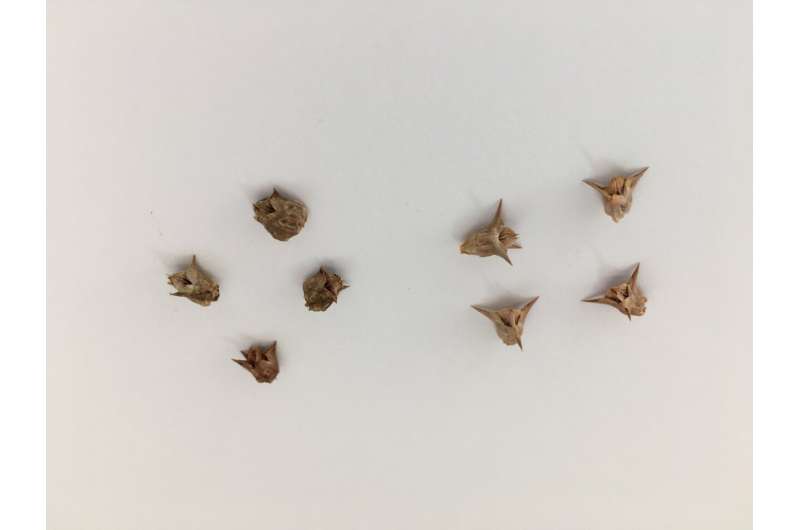Study examines how well-timed cover crops can suppress weeds in California orchards

California's commercial orchards are home to nearly 2.5 million acres of almonds, walnuts, stone fruit and similar crops. Growers focus their most intense weed management efforts on establishing a clear crop row so that weeds won't interfere with irrigation lines, compete with crops for water, or impede the use of sweepers and other harvesting equipment.
Any cover crops used to suppress weeds are typically grown in orchard alleyways during the rainy winter season to replace resident vegetation. A new open access study featured in the journal Weed Science, though, points to the benefit of growing cover crops concurrently with the cash crop to reduce the impact of weeds.
Researchers at the University of California, Davis designed two experiments—one to evaluate the impact of cover crop management intensification in walnuts, and another to evaluate multispecies cover crop mixes and planting dates in almonds.
The cover crops in the study were found to flourish under a variety of management factors. They were most abundant, though, when planted early in the growing season when adequate moisture was available.
"The uniformity in their germination results in a predictable plant cover that enhances biodiversity and promotes favorable orchard floor conditions for crop harvest," says Steven Haring, lead researcher for the study.
One caution: While all the cover crop programs tested were effective at reducing weed biomass, they didn't result in weed-free orchards or in the consistent control provided by repeated herbicide applications. As a result, researchers suggest that growers make concurrently grown cover crops part of a well-integrated orchard weed management program.
More information: Steven C. Haring et al, Agronomic cover crop management supports weed suppression and competition in California orchards, Weed Science (2022). DOI: 10.1017/wsc.2022.48
Provided by Cambridge University Press




















